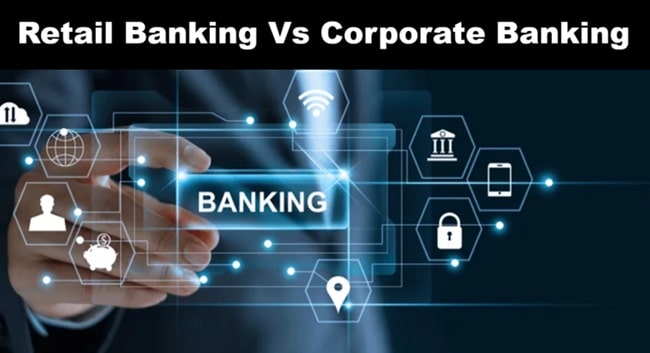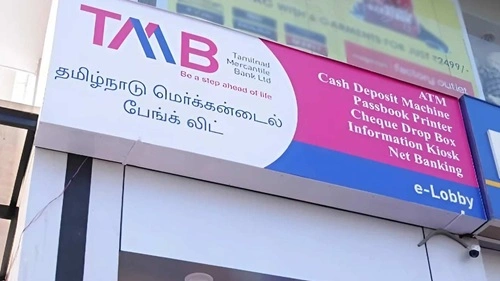Retail banking and corporate banking are terms that don’t sound similar at all, and that’s just because they are just not. Retail banking is all about providing basic financial services to a mass audience like the general public of a country, whereas corporate banking is exactly what it sounds like, yes, it is more about the big businesses/companies or corporates out there. So, if you just for some reason want to know where these two types of banking differ from each other, then just keep on reading. Why? Oh, that’s just because we’re about to get down to an in-depth comparison between retail banking and corporate banking, you know, just to let you know how these two are completely different from one another. Alrighty, here we go then.
So, What’s Retail Banking Anyway?
Let’s first get over what retail banking means and why you should know about it. First things first, yes, it is the very banking type that you have experienced already if you’re a customer of any bank out there. Many people also call it consumer or personal banking. So, if we go by the definition, it is the type of banking that is out there to provide basic banking services to the general public, aka individuals like you and me, as well as some small businesses. Plain and simple!
What Is Corporate Banking, Then?
Well, first of all, just to clear up one confusion, you see, many people out there consider corporate banking and commercial banking as the same thing. But they’re just not. While commercial banking is all about giving financial services to literally all types of businesses and institutions, corporate banking is more focused on just big corporations out there. To put it simply, corporate banking (which also goes by the name business banking) is all about handling huge sums of money and providing banking services for serious business needs.

Key Differences Between Retail and Corporate Banking
1. Who They Serve
As we already told you in the definition segments of these types of bankings already, retail banking is for individuals or the general public. Like, you can be a salaried employee, a student, a freelancer, a retiree, or just about any regular individual, then you have already experienced retail banking.
What about corporate banking, then? Well, it should be clear to you by this point that corporate banking is just for big corporations or businesses out there. Nothing else here.
2. Services Offered
To put it simply, yes, retail banking is all about those basic yet personal finance services, you know, we’re talking about banking products like savings/current accounts, loan options, credit/debit cards, payment systems, etc.
Well, comparatively, corporate banking services are much more complex in nature and really targeted/tailored. If you still don’t get it, we’re referring to services like trade finance, treasury services, large business loans, cash flow management, investment banking, and whatnot.
3. Loan Size and Credit Access
Because in the retail banking segment, the loans are offered to a mass audience or customer base, that’s why the loan amounts are usually much lower. And in most cases, these loan amounts are kinda sufficient for the average individual.
Because corporate banking is all about working with big corporations out there, it is pretty understandable that the loan amounts will be much (MUCH) larger because they are for things like project financing, infrastructure, and equipment leasing, often in crores or millions of dollars.
4. Customization Level
There is just one thing that doesn’t work in the favor of customization level when it comes to retail banking, and that is the fact that retail banking is for millions of people, not a few clients/customers.
But, because the client or customer pool is much smaller with corporate banking, the services can easily be customized to a deeper extent.
5. Transaction Size and Frequency
In retail banking, you’ll see that the transaction size is much smaller, and that’s just because it is for the general public. That’s precisely why the transaction size is smaller, but the transaction frequency is super high.
Just like the previous comparison point between these two, once again, corporate banking is all about handling fewer but super large transactions, and the reason once again is pretty similar. Yes, that’s just because the client pool is smaller, but all of them are big corporations.
6. Risk Profile
In retail banking, the risk lowers down automatically because of the fact that all of this is spread across thousands or millions of customers.
By nature, corporate banking involves higher risk because the amounts included are much higher, and one wrong decision or one thing gone wrong can have a huge impact on the bank as well as the businesses/corporations.
7. How Banks Earn Money
With retail banking, banks make huge revenues by lending loans to the general public and charging account fees, and then there are card charges, among a few other types of charges.
Then, because corporate banks offer customer services, the interests are much higher, and the transaction fees are even higher.
8. Relationship Style
Most of the time, retail banking is just purely automated or assisted, so the banks don’t directly have a face-to-face relationship with most customers since there are so many of them already.
Once again, we’d say that because there are fewer clients or customers in corporate banking, the banks that are providing these services have to maintain a good relationship, and that is possible by assigning dedicated relationship managers.
9. Digital Experience
When it comes to the digital experience, both types of banking have their unique or different way of doing things. Like, Retail banking is more about speed and ease of the digital experience, where the banks offer mobile apps, online banking, instant transfers, and whatnot, so that the user/customer can access different banking services whenever they want.
On the other hand, when we talk about corporate banking, within this area, banks also provide some digital tools or platforms, which mostly include dashboards to analyze everything, handle bulk payments, treasury tools, and most importantly, the analytical tools.


